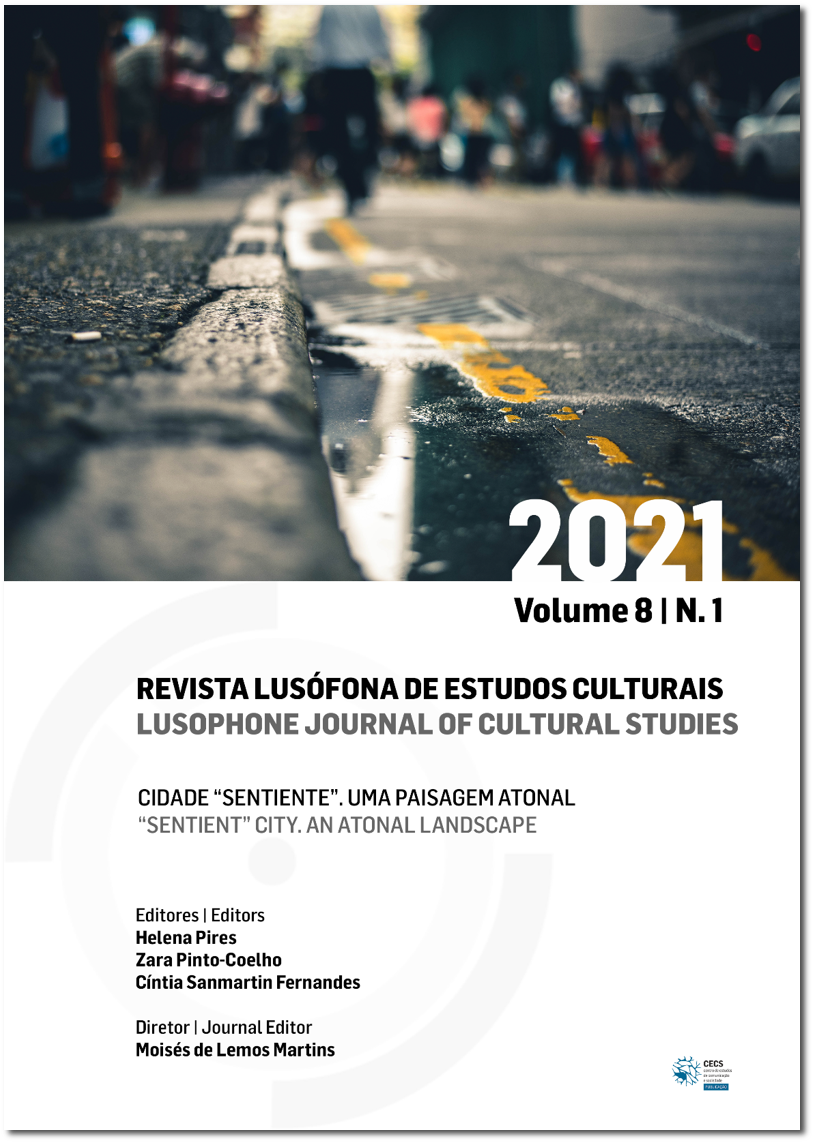Sonorous Windows in Times of Pandemic
DOI:
https://doi.org/10.21814/rlec.3171Keywords:
city, communication, culture, pandemic, sonoritiesAbstract
The ideas developed in this article take as reference not only part of the literature that analyzed the trajectory of some societies in times of pandemic and was produced within the framework of sound studies, but also the audiovisual material and narratives collected during an exploratory research. This research was carried out in the traditional media and on the social networks of the internet and focused on the behavior and reactions of the actors during the quarters of the covid-19 that occurred in 2020 and 2021 in several locations around the globe (with emphasis not only on the context of Brazil and the United States of America, but also on the countries of the European continent). It should be noted that we tried to analyze here the double flow of approximations and distances between the actors that — largely deprived of their dynamics of collective and daily interactions in the cities (due to the sanitary measures of social distance recommended by the authorities during the pandemic) — found, in some sound experiences of solidarity and protest (which echoed in the territories), alternatives for the realization of relevant socio-cultural exchanges. Thus, those actors produced peculiar and relevant alliances and tensions in this context, which make it possible to rethink — especially from the perspective of sound and music studies — not only the socio-political dynamics of the acoustic experiences that were generated in various locations, but also the limits and the porosity of traditional borders between the public and private spheres.
Downloads
References
Arendt, H. (2007). A condição humana (R. Raposo, Trad.). Forense Universitária. (Trabalho original publicado em 1958)
Attali, J. (1995). Ruídos (R. Perez, Trad.). Siglo XXI. (Trabalho original publicado em 1977)
Barbosa, M. (2020, 20 de abril). Pandemia: A história se repete como tragédia ou como farsa. Notícias CFCH/UFRJ. http://www.cfch.ufrj.br/index.php/27-noticias/1311-pandemia-a-historia-se-repete-como-tragedia-ou-como-farsa?fbclid=IwAR1cOB3YhvyHTch_r4CMJsZFqfFoW3BGrCyMH41WMyO515jxJEg_Ffs9LPY
Bass, M. T. (1864). Street music in the metropolis. John Murray.
Bieletto, N. (2018). De incultos y escandalosos. Resonancias, 22(43), 161–178. http://resonancias.uc.cl/pt/N%C2%BA-43/de-incultos-y-escandalosos-ruido-y-clasificacion-social-en-el-mexico-postrevolucionario-pt.html
Bijstervelt, K. (2008). Mechanical sound. The MIT Press.
Bull, M. (2015). Sound moves. Routledge.
Certeau, M. (1994). A invenção do cotidiano (E. Alves, Trad.). Vozes. (Trabalho original publicado em 1980)
Delumeau, J. (2009). História do medo no ocidente (P. Froes, Trad.). Companhia das Letras. (Trabalho original publicado em 1978)
DeNora, T. (2000). Music and everyday life. Cambridge University Press.
DeNora, T. (2016). Music asylums. Routledge.
Dominguez Ruiz, A. L. (2015). Ruído: Intrusion sonora e intimidad acústica. Inmediaciones de la Comunicación,10(10), 118–130. https://doi.org/10.18861/ic.2015.10.10.2589
Família Martinez. (2020, 23 de março). Lulu Santos fazendo show na varanda do prédio dele Que massa!!!! [Vídeo]. YouTube. https://www.youtube.com/watch?v=w429iDXWi-k
Halbwachs, M. (2013). A memória coletiva (L. Schaffter, Trad.). Centauro. (Trabalho original publicado em 1950)
Herschmann, M., & Fernandes, C. S. (2014). Música nas ruas do Rio de Janeiro. Ed. Intercom.
Labelle, B. (2010). Acoustic territories. Continuum.
Lima, N. T., Buss, P. M., & Paes-Sousa, R. (2020). A pandemia de covid-19: Uma crise sanitária e humanitária. Cadernos de Saúde Pública, 36(7). https://doi.org/10.1590/0102-311X00177020
Obici, G. (2008). Condições da escuta. Ed. 7 Letras.
Picker, J. (2003). Victorian soundscape. Oxford University Press.
Piketty, T. (2014). O capital no século XXI (M. Bolle, Trad.). Editora Intrínseca. (Trabalho original publicado em 2013)
Rivera, T. (2020). Fechar portas, abrir janelas. Estratagemas plásticos para sair de si. N1-Edições. http://www.artes.uff.br/taniarivera/data/uploads/n-1-edicoes-077.pdf
Schafer, R. M. (1969). The new soundscape. Don Mills.
Scott, C. D. (2020). Policing black sound: Performing UK grime and rap music under routinised surveillance. Soundings, 75, 55–65. https://muse.jhu.edu/article/764262
Sennett, R. (1988). O declínio do homem público (L. A. Watanabe, Trad.). Companhia das Letras. (Trabalho original publicado em 1974)
Spencer Espinosa, C. (2020). Hacia un nuevo cancionero popular. Boletin Música, 54, 29–51.
Sterne, J. (2012). MP3: The meaning of format. Duke University Press.
Stories do samba. (2020, 27 de março). Mumuzinho faz show da varanda de sua casa [Vídeo]. YouTube. https://www.youtube.com/watch?v=csFeZHdNIig
Thibaud, J. P. (2015). En quête d’ambiances. Metis Press.
Trotta, F. (2020). Annoying music in everyday life. Bloomsbury Publishing.
Zumthor, P. (2007). Performance, recepção, leitura (J. Ferreira, Trad.). Cosac Naify.
Downloads
Published
How to Cite
Issue
Section
License
Copyright (c) 2021 Revista Lusófona de Estudos Culturais

This work is licensed under a Creative Commons Attribution 4.0 International License.
Authors own the copyright, providing the journal with the right of first publication. The work is licensed under a Creative Commons - Atribuição 4.0 Internacional License.












